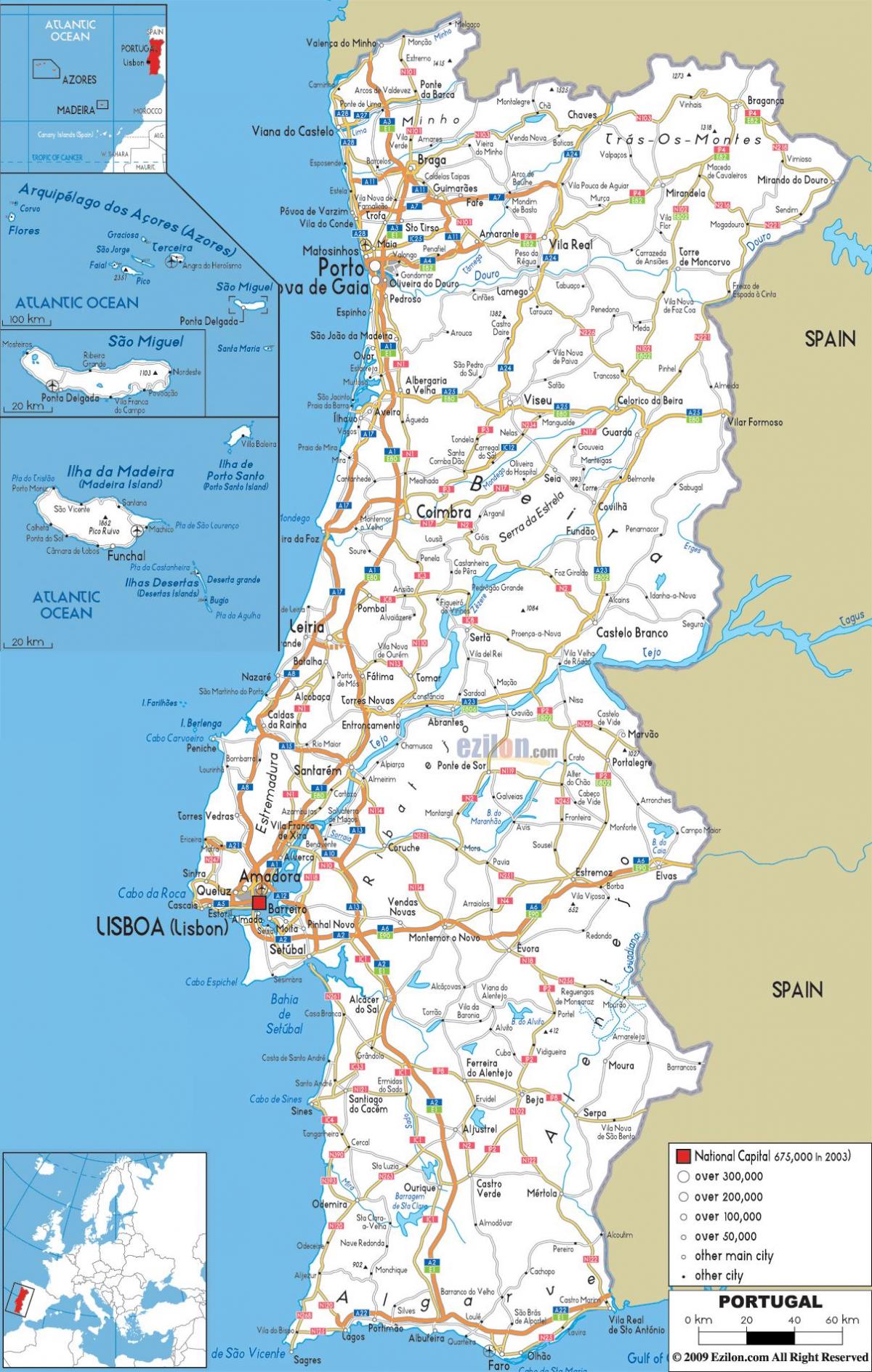search
Portugal road map
Road map of Portugal. Portugal road map (Southern Europe - Europe) to print. Portugal road map (Southern Europe - Europe) to download. In 1972, stage of the plan, Brisa was to construct 390 km (242 mi) of roadways by the end of 1981 as its shown in Portugal road map. The first priority was a highway designated as A1, a 300 km (186 mi) stretch reaching from the capital of Lisbon north to Porto, Portugal second-largest city. This highway would become a crucial link to the industrial activity in the north of the country and experience the highest traffic volumes in Brisa network. Construction also began on the A2, which was projected to reach from Lisbon to resort areas on the southern coast. wo years after the establishment of Brisa, the right wing dictatorship was overthrown by a leftist revolution. The new regime included Brisa in a program of nationalization, first taking control of 40 percent of the company and eventually gaining a 90 percent share. Road construction continued stretch by stretch under socialist control.
As the first highway sections were completed on the A1 and A2, the government concession was expanded to include adjoining stretches. In addition, concessions were granted for expansions to the network: the A3 would extend the north-south highway from Porto up to the Spanish border, the A4 would reach east from Porto to the city of Amarante, and the A5 was to reach from Lisbon about 25 mi (40 km) west to the coast as you can see in Portugal road map. However, during the first years of democratic government, the combined length of the network never exceeded 300 km (186 mi) through the 1980s. Transportation was seen as a priority in the 1990s, pushed by the growing use of automobiles and mass consumption. In 1985, a new government led by the center-right Social Democrats headed by Prime Minister Aníbal Cavaco Silva, came to power in Portugal and began loosening the state's control over economic activity.
After years of slow progress, the government began an extensive investment program to bring the transportation infrastructure up to date. While some funds were earmarked for railroad and subway companies, the largest share went to highways. Brisa received a direct capital injection of PTE 17.7 billion in 1990. The investment was urgently needed, since traffic volume in Portugal was growing at a faster rate than any other country in the European Union. Average daily traffic volume increased at a rate about 4.5 percent more than the gross domestic product each year between 1990 and 1996. The government kept up its intensive program of annual investments, allowing Brisa network to grow from 300 km (186 mi) in 1990 to 600 km (373 mi) in 1995 as its mentioned in Portugal road map.


